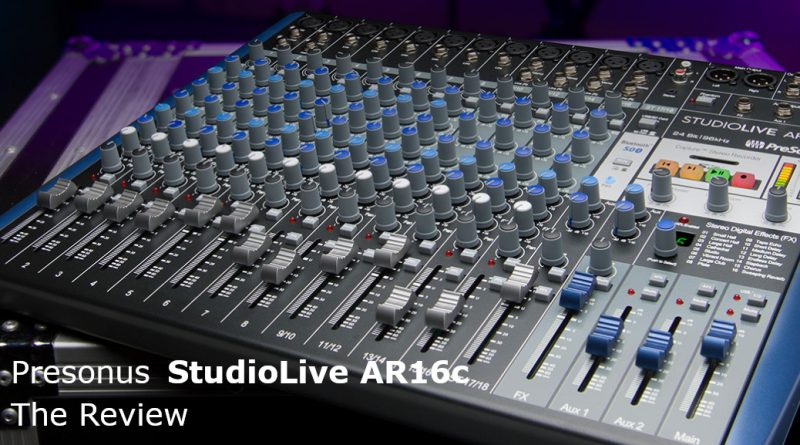STUDIOLIVE AR16C: PRODUCING MUSIC IN TOTAL AUTONOMY, WITH OR WITHOUT PC (ENG REVIEW)
The Presonus console combines an analog mixer with a USB-2 18-in/4-out multi-channel audio interface, a stereo digital recorder on SD cards, a multi-effects unit and an efficient monitoring system, all in one versatile and flexible device adapted to the needs of musicians, small bands and young producers.
Presonus, a renowned manufacturer of hardware and software devices for the pro-sumer and professional sectors of audio and music production, periodically innovates the market with state-of-the-art and newly designed devices. This is also the case with the recent StudioLive ARc lineup, which at the time of writing offers 3 models: AR8c, AR12c and AR16c. The construction philosophy underlying the creation of these consoles is, in essence, that of integrating everything needed for music production into a single device, with or without the aid of a computer. Let’s take a closer look at the most generous device in the range: StudioLive AR16c.
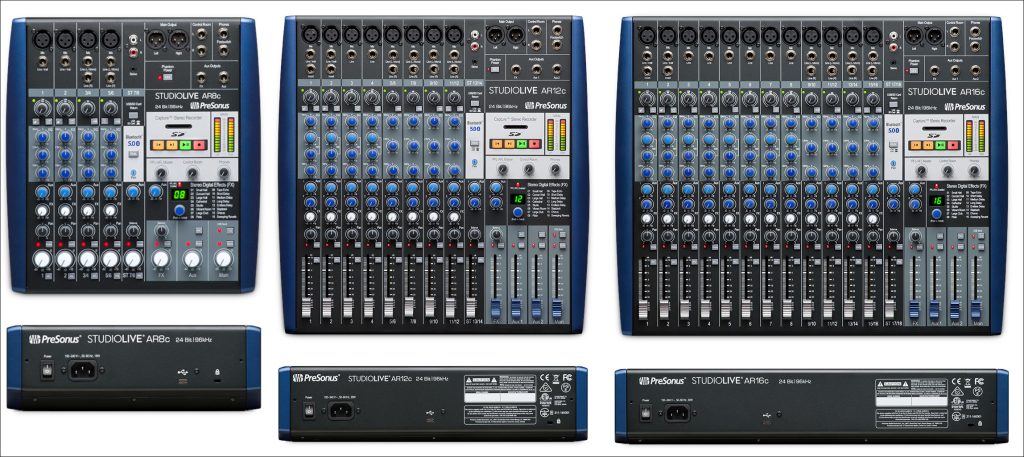
IN THE BOX
StudioLive AR16c arrives in an elegant package, inside which, in addition to the console, we find a series of accessories: a quick installation guide, a power cable, a USB-A/USB-C cable, 4 rubber feet, a paper card with serial for product registration and, last but not least, a complete kit of brackets and screws for rack mounting.
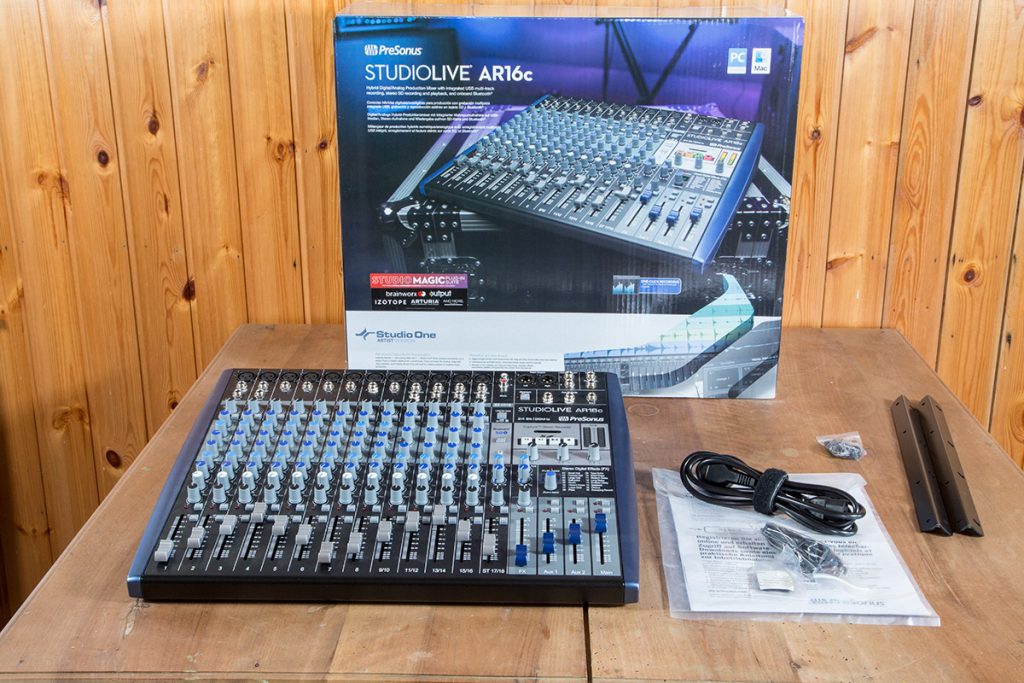
From a construction point of view, AR16c is quite compact, housed in a frame made entirely of metal, with good quality plastic side panels, finely shaped and finished with the manufacturer logo. The mixer provides 18 channels, of which 8 mono and 5 stereo, plus 4 buses: Main, Aux-1, Aux-2 and FX. Under the hood a multi-effects stereo unit with 16 main algorithms, a stereo digital recorder on SD cards, a Bluetooth 5.0 receiver and an 18-in/4-out channel audio interface on USB 2 connectivity. All connection terminations are accessible directly from the top panel. On the rear panel, however, we find the power button, the power socket and the USB-C port.
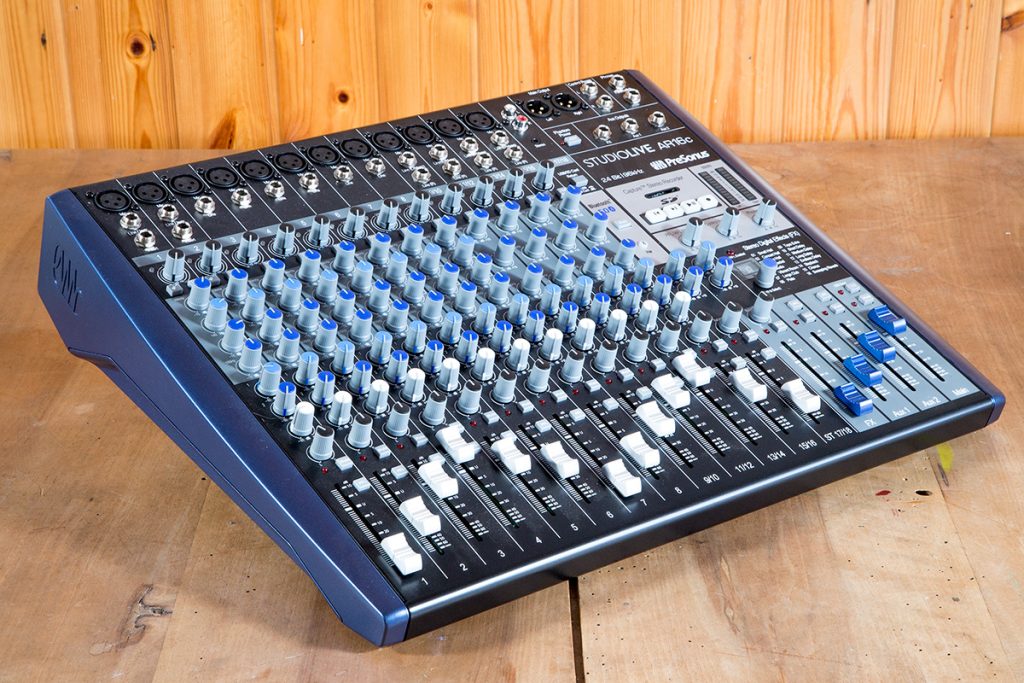
CHANNEL STRIP
The functional architecture of StudioLive AR16c provides different types of channel-strips: 8 mono and 4 stereo, plus one called Super–Channel. The strips relating to mono channels 1-2 are equipped with microphone input on XLR socket plus line/instrument input on ¼” jack, as well as an Insert socket on ¼” TRS jack for wiring external units, such as effects and processors signal. Two switches allow you to switch the input source between instrumental and line, and enable/disable a low-cut filter with a preset frequency of 100Hz and a slope of 18dB/octave. The EQ section offers two shelving filters: High with center band frequency on 10kHz and gain excursion between +/- 15dB, and Low, with center band frequency on 100Hz and gain excursion between +/- 15dB. The mid-range, on the other hand, is managed through a semi-parameter that allows you to adjust the intervention frequency between 140Hz and 3.5kHz and the gain range between -15/+ 15dB.
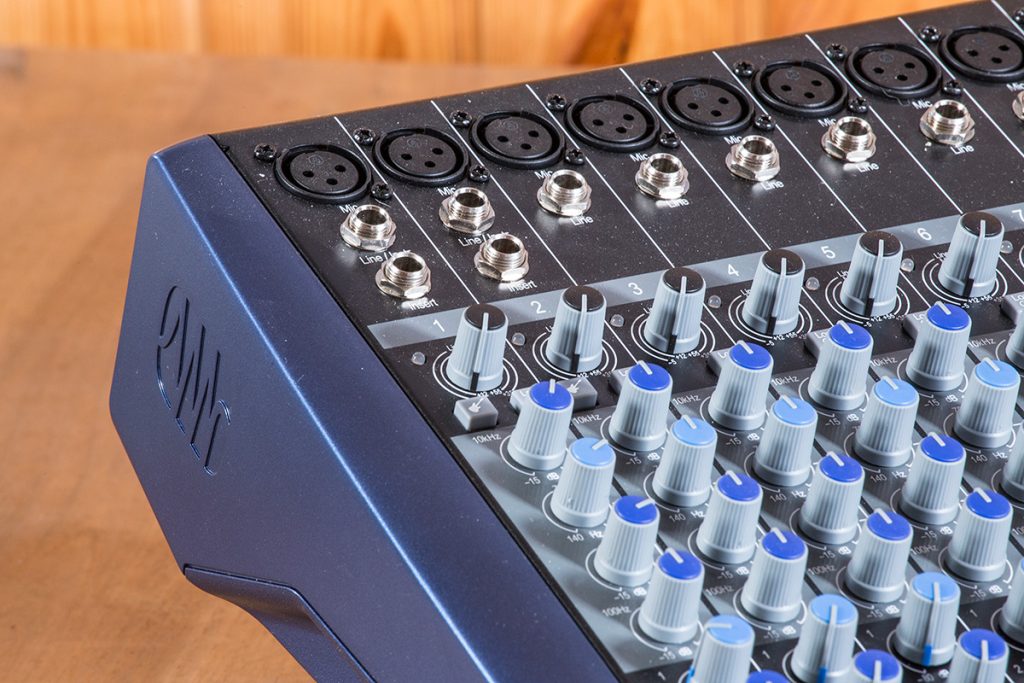
Continuing, we find two Aux for managing the sends to external processing units or for managing auxiliary mixes to be used for monitoring, plus an FX send that adjusts the channel send to the integrated effects unit. A little further down, a potentiometer for adjusting the PAN, Mute and PFL buttons and a 60mm fader. Channel strips 3-8 are identical to channel strips 1-2 but do not have an insert socket and instrumental input for high impedance sources (Hi-Z).
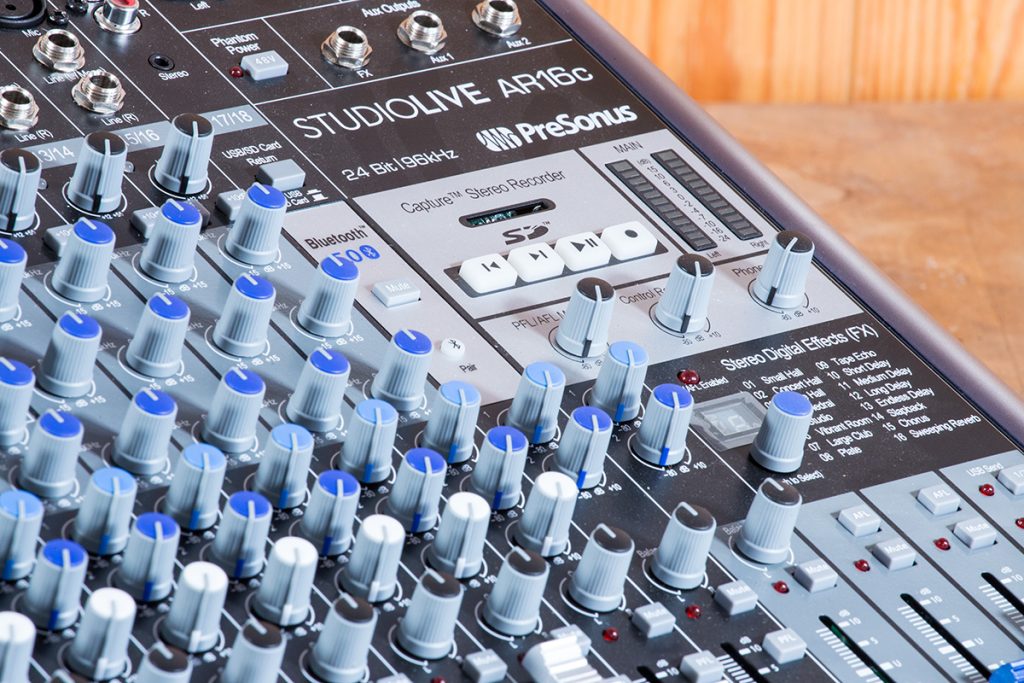
Channels 9-16 are organized in 4 stereo channel strips, each equipped with microphone input on XLR, input for line sources on two 1/4″ jacks, a button (+ 10dB) that allows you to apply an additional gain of +10dB, a three-band equalizer with fixed center frequencies and gain range between -15/+ 15dB. The last stereo channel (15-16) also provides a USB 3/4 button that allows you to convey the homonymous sources coming from the DAW running on the computer to the input. A separate discussion concerns the strip relating to channels 17-18 (Super Stereo Channel), which allows you to carry analog stereo sources via unbalanced RCA and 1/8″ TRS minijack inputs, as well as digital return sources from the PC via USB, from the SD card in the integrated digital recorder or via Bluetooth. This strip offers two AUX sends, balance control, Mute and PFL buttons, and a 60mm fader.
MASTER & BUS
At the top right, the Master section offers the classic XLR balanced Main outputs, Control Room outputs on 1/4″ jacks, headphone output on 1/4″ TRS jacks, a jack for external pedal and three Aux outputs (Aux -1, Aux-2 and FX). The latter, if necessary, allows you to wire an external processing unit and bypass the one integrated into the console.
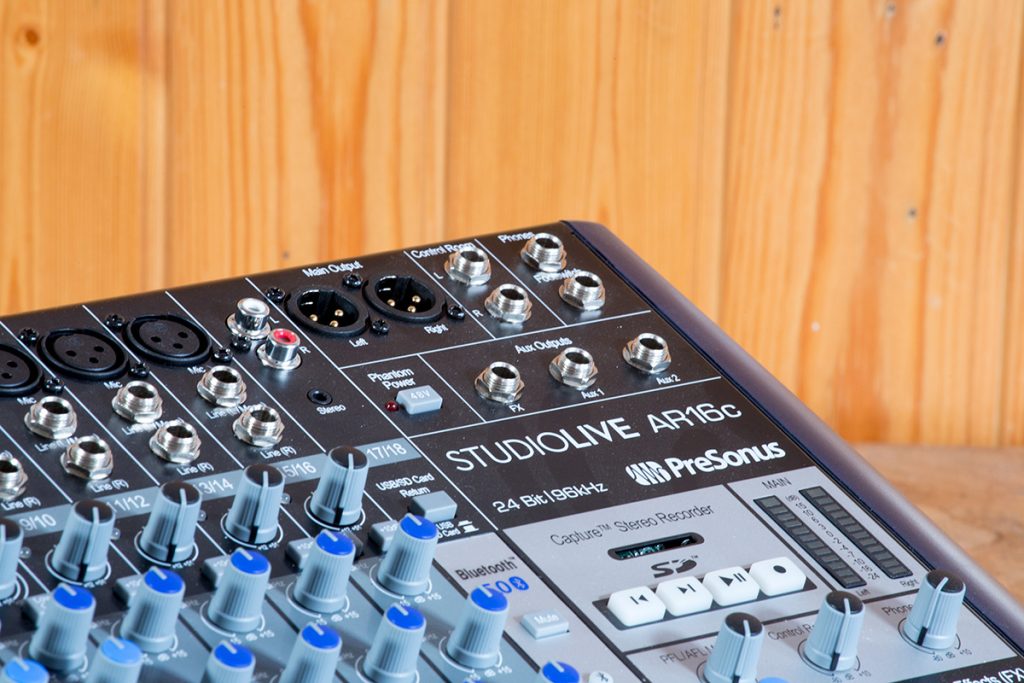
Four buses, on the other hand, are available: for controlling the internal effects (FX), for controlling the AUX 1 and AUX 2 sends, and for the Main. Each bus features a 60mm fader and Mute button. In addition: balance control (FX-Bus), AFL button (AUX-1 and AUX-2 Bus) and USB Send 1-2 button (Main), which allows you to convey the incoming mix to the PC.
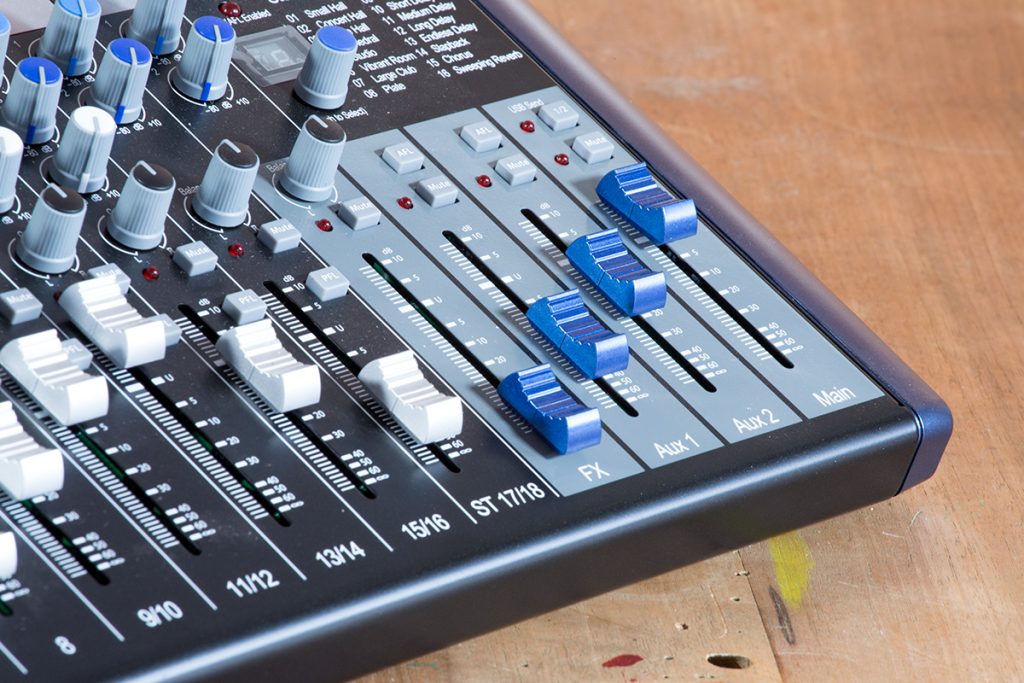
SD PLAYER/RECORDER
Among the interesting features of StudioLive AR-16C stands out the integrated digital stereo recorder/player, which allows you to directly acquire the mix on SDHC card in WAVE format. The system supports cards with capacities up to 32GB and can also be used as a player for playing sources in linear (WAV) or compressed (MP3) format. Using the recorder is very simple. Once the SD card (pre-formatted FAT16) is inserted, a series of buttons allows you to manage the normal transport operations typical of a recorder, such as record, play, pause, as well as, during playback, to move forward or back through the tracks on the device. Once the registration is complete, simply remove the card, insert it into a PC using a card reader and transfer it to the computer disk.
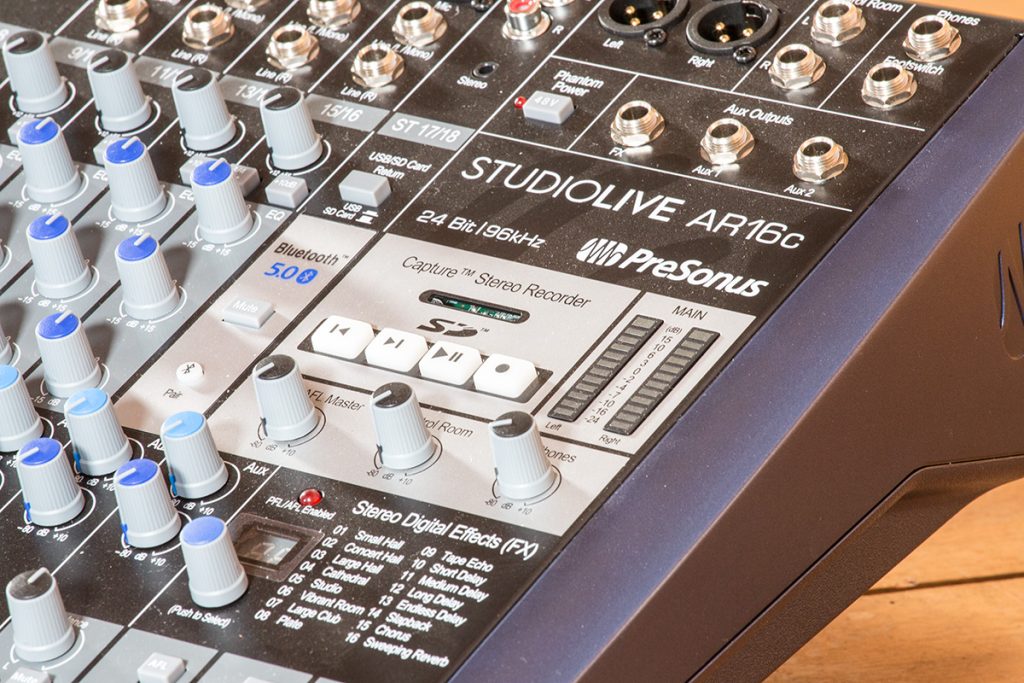
PRODUCT REGISTRATION
Before using the mixer, you must register the product on the Presonus website, an essential condition for downloading the software supplied with the console. Once you have created a personal account on www.presonus.com and authenticated with your credentials, just click the Register a Product button, enter the purchase date and the serial number visible on the plate on the rear panel of the device, then click on Register.
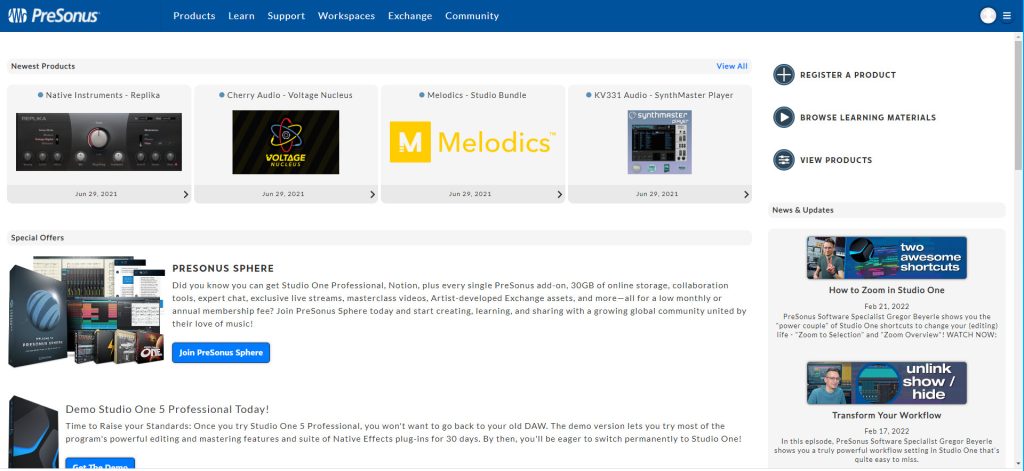
A few seconds and you are enabled to download the applications supplied: you go from the control software Presonus Universal Control to the platform for the production of loop-music Ableton Live Lite, from the audio/midi sequencer Presonus Studio One 5 Artist to the proprietary software Presonus Capture 3 for real-time multitrack recording, up to the whole series of virtual instrument and effects plug-ins included in the StudioMagic Bundle (see datasheet for details). Each software has a dedicated area with the button to proceed with the download, the reference serial and installation instructions. Among the numerous titles included in the StudioMagic Bundle stand out the custom version of the Analog Lab Intro synthesizer by Arturia, the UVI Model-D virtual piano and the effects collection signed by Plugin Alliance, which includes Brainworx and SPL processors. Also interesting is the presence of the Lexicon MPX-i Reverb and the Neutron Elements suite by iZotope .
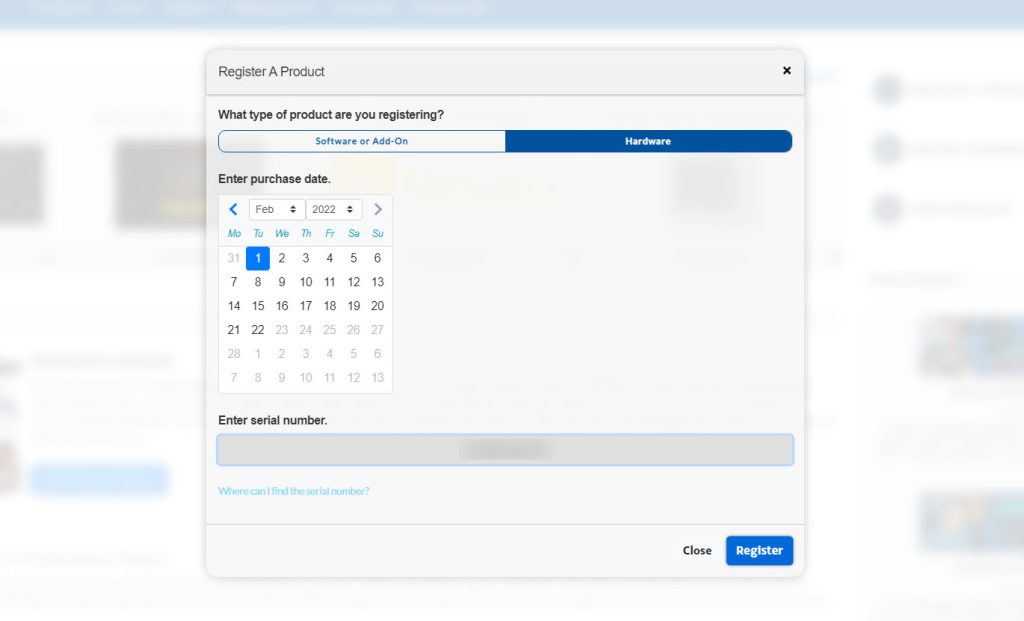
CONNECT AR16c TO THE COMPUTER
After downloading and installing the Universal Control software, we physically connect the console to the computer via USB with the supplied USB-C/USB-A cable. After installing Universal Control, we turn on the console: a few seconds and the operating system, in our case Windows 10 64bit, initializes everything.
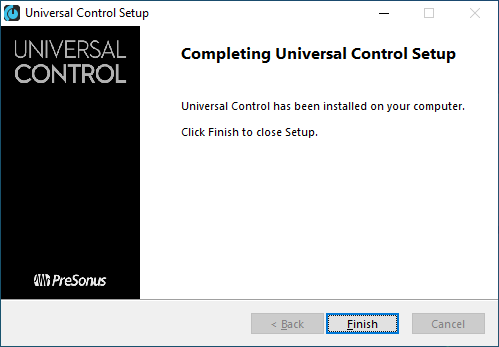
Once configured, StudioLive AR16c can be used on the PC side as a 24bit/96kHz audio interface with 18-in/4-out architecture. From the Universal Control software it is possible to directly adjust some fundamental operating parameters, such as the sampling frequency (samplerate), between 44.1 and 96kHz, the size of the buffer (between 16 and 2,048 samples), the Loopback mode (Mix 1-2, Virtual), as well as carrying out functional maintenance operations such as updating the firmware.
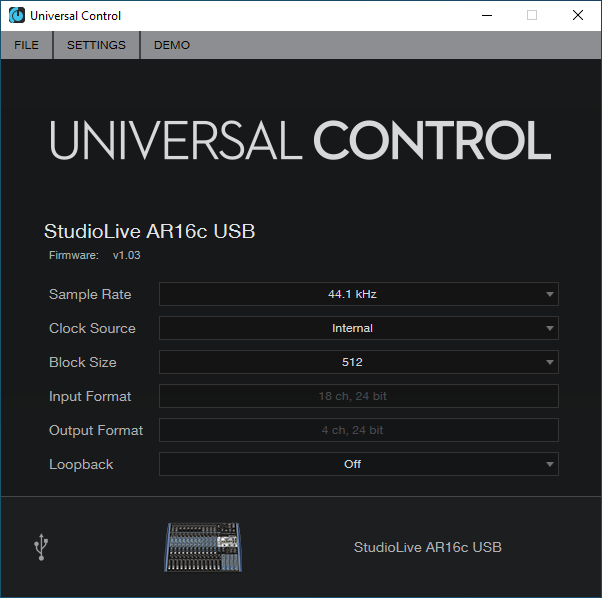
LOOPBACK FUNCTION
Limited to Windows systems, StudioLive ARC16c drivers are equipped with a feature called Loopback, which allows you to acquire the audio reproduced by a software application and at the same time the signal from the console inputs. The Loopback feature of StudioLive ARC16c essentially supports two modes called “Merge Loopback with 1/2” and “Virtual”.
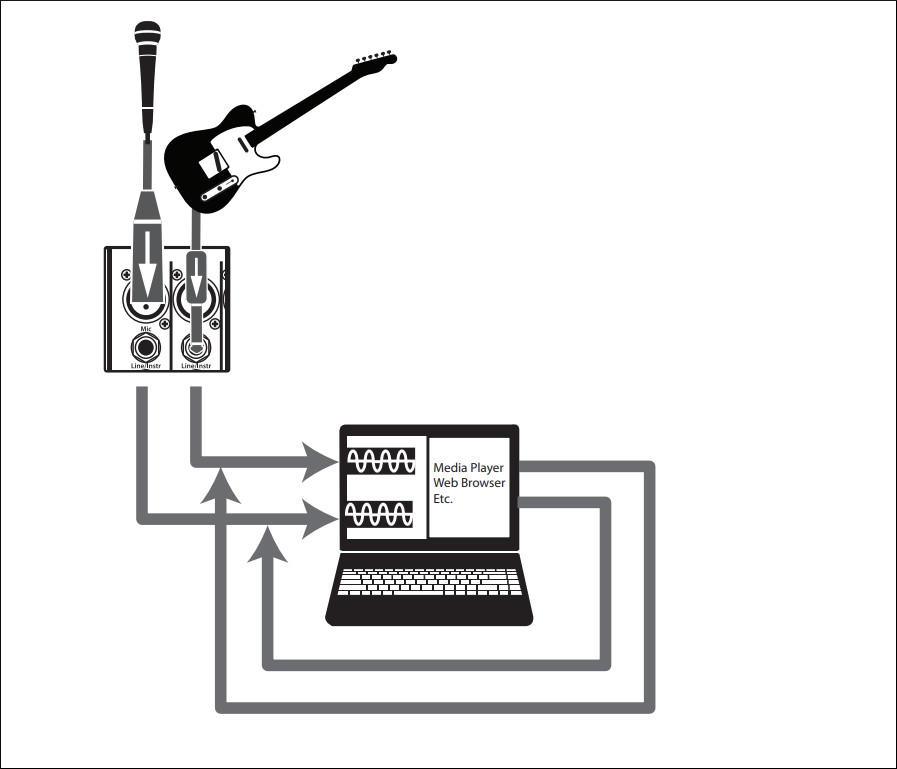
In the first case (Merge option) the audio coming from the application to be acquired is mixed with the sources passing through inputs 1-2 of the console. In the second case (Virtual option), however, the audio coming from the application and the input one are acquired on separate tracks. All LoopBack settings are manageable through the Universal Control.
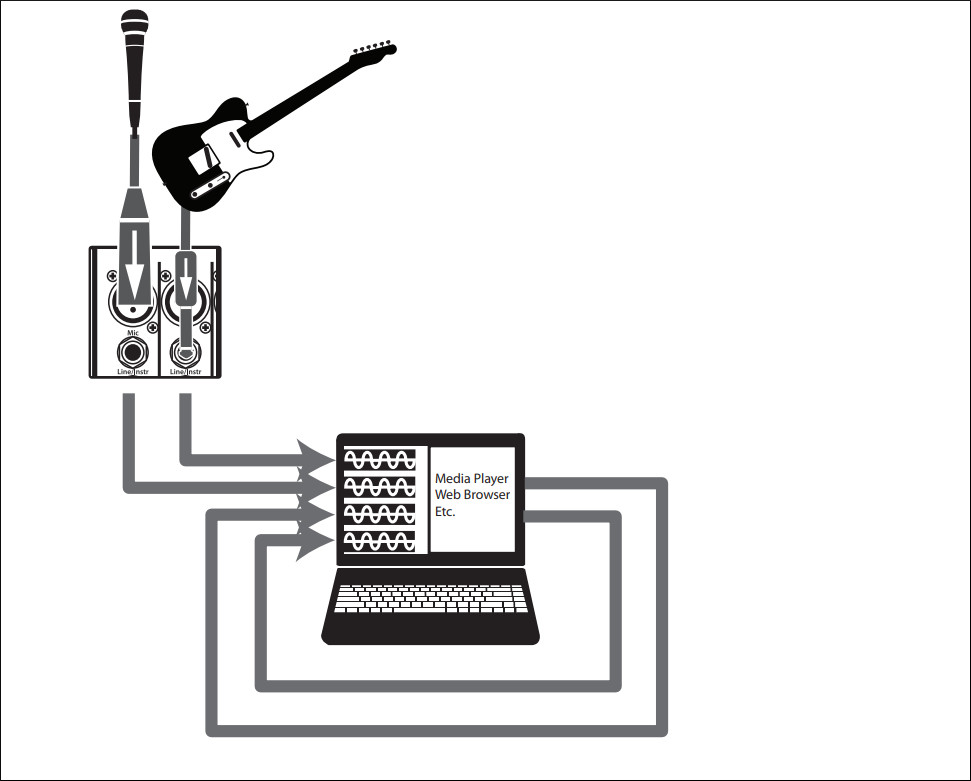
PRESONUS CAPTURE 3
One of the two main software supplied with StudioLive ARC16c is Presonus Capture 3. To install it, after downloading the program from the reserved section of your account on the website www.presonus.com, just launch the executable file and follow some simple on-screen instructions. Presonus Capture 3 is an application designed for real-time multitrack audio acquisition, excellent to be used for on-the-fly studio recordings, but especially in live.
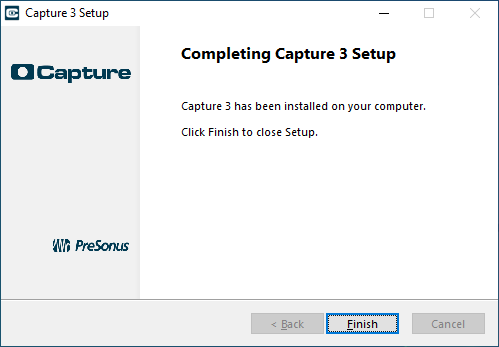
From the main screen, after adjusting the sample rate and other parameters such as the acquisition resolution and buffer size, just click New Session, assign a name to the session and press OK. The main interface of the software is structured along the lines of that of a traditional sequencer.
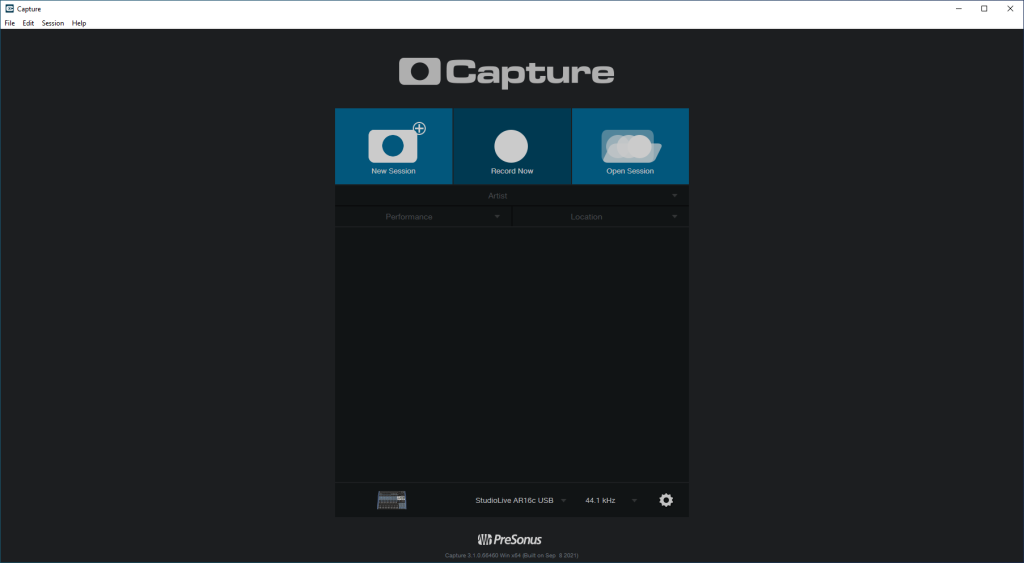
On the left there are the available inputs, and for each one the Mute/Solo and Rec buttons, on the right the area for displaying the events, on the top the section for controlling transport operations (Rec, Play, Stop) and low the meters for monitoring the levels of the input sources. After a preliminary check on the individual channels, just click REC and that’s it.
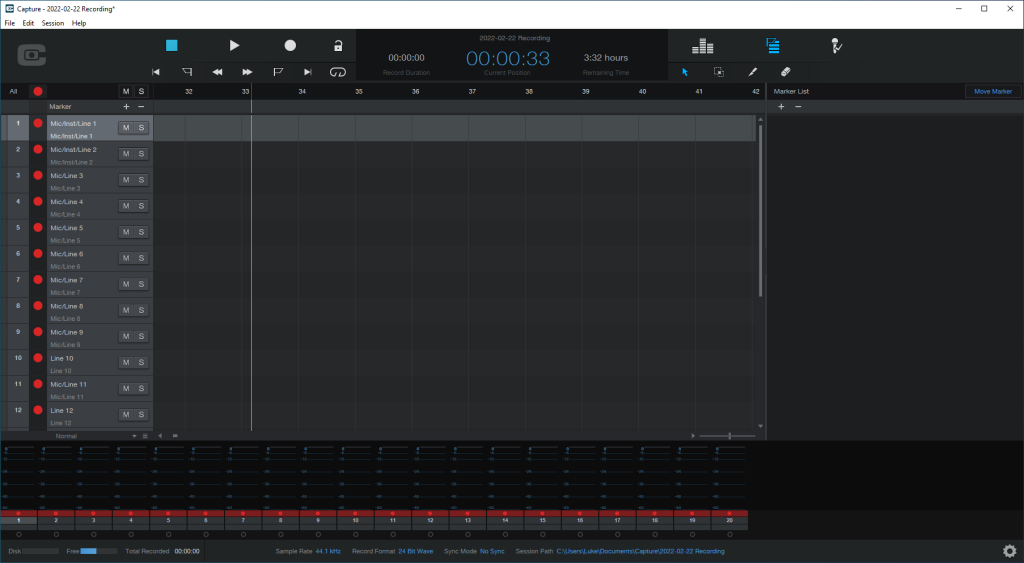
STUDIO ONE 5 ARTIST
Among the most interesting software supplied with StudioLive AR16c, the proprietary Studio One 5 sequencer in the Artist version naturally stands out, which provides a functionally complete operating environment for recording, manipulation and multitrack audio/midi finalization. Studio One 5 Artist supports an unlimited number of tracks and implements 5 virtual instruments for sound generation: the Impact XT drum sampler, the Presence XT sample player, the Mai Tai Polyphonic analog emulation synthesizer, the Mojito subtractive monophonic synthesizer and the Sample One XT sampler. Plus: VST/AU/ReWire support, MPE MIDI support and a suite of native effects for audio finalization.
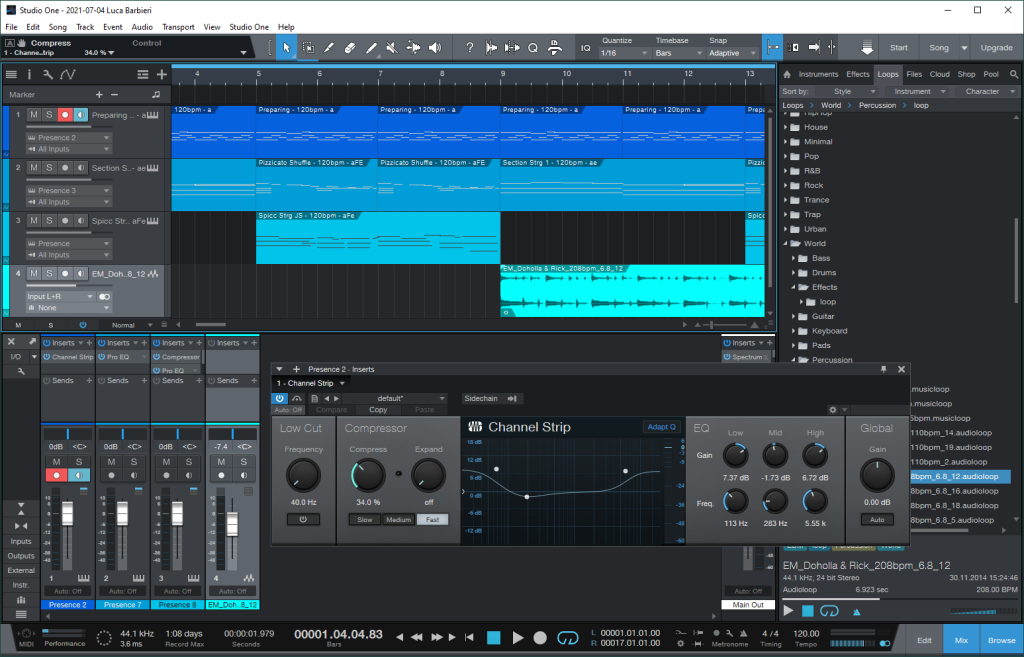
To install Studio One 5 Artist, we download the application from our personal area on the Presonus website, start the executable file and follow some simple instructions shown on the screen. After the procedure, we launch Studio One 5 Artist, type our credentials on the home screen and go. At this point, to activate Studio One 5 Artist on the PC on which we have installed it, it is necessary to enter the serial number that we find in our personal area on the Presonus website. One click on the Activate button and that’s it. Before starting the main screen, Studio One 5 Artist invites us to install the additional software supplied: approximately 8GB of data including samples, loops, instruments and virtual effects. After selecting the destination folder and the type of installation, proceed by clicking Install.
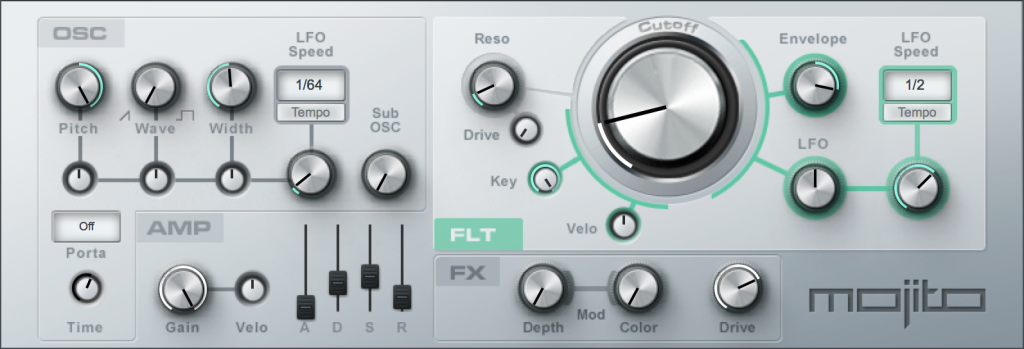
CONCLUSIONS
Presonus StudioLive AR16c is a candidate among the most innovative all-in-one solutions with the best quality/price ratio currently on the market, designed for music production with and without the aid of a computer. Usable like a traditional analog mixing console, complete with internal effects and integrated digital stereo recorder, just connect it to any recent generation PC/Mac to transform it into a functional and efficient multitrack digital audio acquisition and manipulation system with autonomy up to 18-in/4-out. The XMAX preamps do not disappoint: they are quiet and with an adequate gain range to meet the main operational needs. Both the drivers and the Universal Control software are now super tested, allowing you to work even on complex work sessions with excellent levels of stability and reliability. Presonus StudioLive AR16c costs in store and online around 600 euros, a very interesting price if you think about the technical and functional characteristics of this device and the value of the supplied software. In short, a truly all-in-one solution, with an excellent quality/price/performance ratio, able to meet the needs of musicians, bands and young producers.
PROS
- Quality/Price ratio
- Preamps
- Pc/Mac/iOS/iPadOS compatibility
- Stereo Digital Recorder on SD cards
- Usable as mixing console, audio interface, stereo digital recorder/player
- Effects
- Bluetooth 5.0
CONS
- Global Phantom Power
- No MIDI I/O
FEATURES
• Compatibility: Windows/MacOS, Apple Silicon, iOS, iPadOS
• Connectivity: USB-C
• Number of channels: 18
• Mono Channels: 8, Mic/Line (channels 1-2 also Hi-Z sources)
• Stereo Channels: 4 + 1 StereoSuper Channel with Bluetooth, RCA, minijack da 1/8” inputs
• Insert socket: channels 1-2
• AD/DA converters: up to 24-bit/96kHz
• Busses: 4 (FX, Aux-1, Aux-2, Main)
• Phantom Power: yes, +48V
• Headphone out: yes, with level control
• Audio interface: 18-inx4-out @ 24bit/96kHz, USB 2.0
• Stereo digital recorder: supports SD cards up to 32GB
• Software supplied: Presonus Capture 3, Presonus Studio One 5 Artist, Ableton Live Lite, Studio Magic Bundle (Arturia Analog Lab Intro, Brainworx bx_opto, bx_rockrack, Cherry Audio MG-1 Plus, Cherry Audio Voltage Nucleus, Ghosthack Essential Sounds, iZotope Neutron Elements, Klanghelm SDRR2tube, KV331 Audio Synthmaster Player, Lexicon MPX-i Reverb, Mäag Audio EQ2, Melodics, Native Instruments REPLIKA, Output Movement, SPL Attacker Plus, UJAM Virtual Bassist ROWDY, UVI Model D).
• Dimensions: 89x480x397mm
• Weight: 6,4kg

